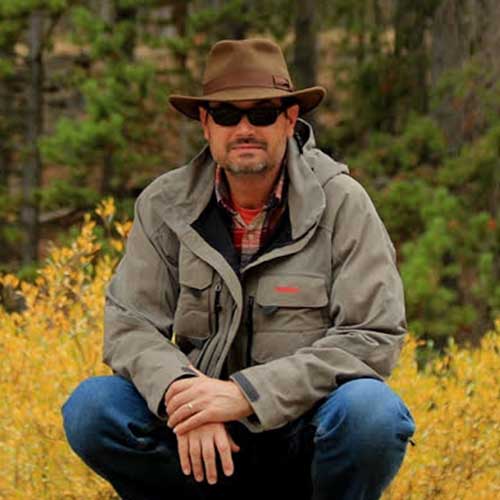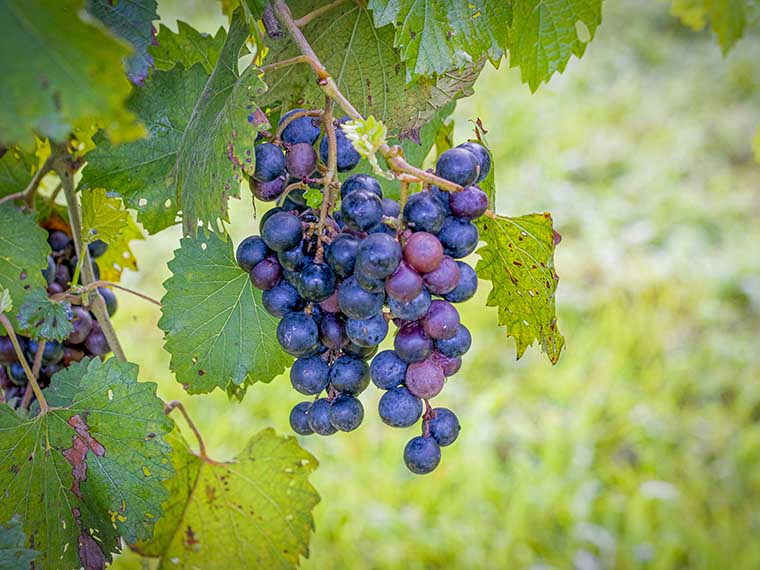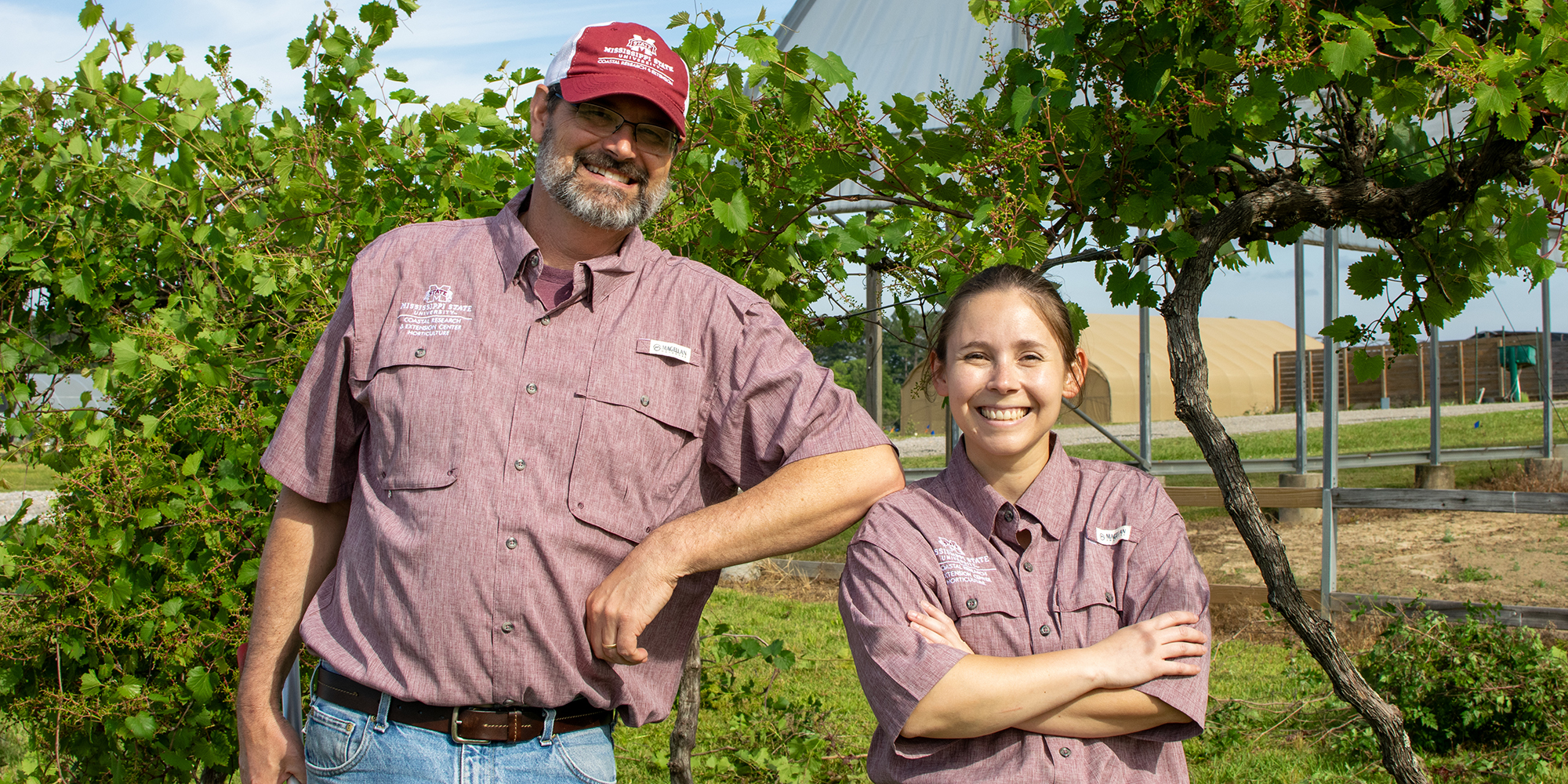The information presented on this page may be dated. It may refer to situations which have changed or people who are no longer affiliated with the university. It is archived as part of Mississippi State University's history.
When we think of quality wine, we usually envision lush vineyards along the West Coast or even the Italian countryside. With the south's subtropical climate and humidity, it is not top of mind when picturing a vineyard. However, Mississippi Agricultural and Forestry Experiment Station (MAFES) researchers are working to create a future for winemakers in Mississippi.
Haley Williams is an MSU doctoral student in plant and soil sciences focused on horticulture. She's been researching the 'MidSouth' grape and wine fermentation techniques that could be possible for growers in Mississippi
Williams said she never pictured winemaking in Mississippi until she read MAFES Discovers, the Mississippi Agricultural and Forestry Experiment Station's research magazine. The story that caught her attention was the study of muscadines and bunch grapes by Dr. Eric Stafne, plant and soil sciences extension and MAFES research professor, and Dr. Sam Chang, food science, nutrition and health promotion professor and MAFES scientist.
Her master's work mainly evaluated sugar and acid content, as well as the pH, antioxidants, and anthocyanins—coloring— of the grapes. After staying for her doctoral degree and focusing on winemaking, it sparked a passion within her to expand the Mississippi winemaking industry through her research.
In two studies conducted on the 'MidSouth' grape, Williams and Stafne, her major professor, incorporated canopy management practices; strategies winemakers utilize to reach their end goals. The researchers chose to incorporate early pruning, leaf removal, and shoot thinning. The first study had four treatments on four sets of 12 vines. Treatments included early pruning, early pruning plus leaf removal, normal pruning plus leaf removal, and a control treatment of normal pruning.
"Our goal was to see if early pruning in December would improve the fruit quality while changing the harvest date. Pruning of the 'MidSouth' is usually in late February or early March, which results in a harvest time that is not ideal for the grapes and harvester. It is very hot at the end of July and first part of August when the harvest occurs," she said.
Leaf removal occurred during early pruning in December and during normal pruning in February and March. Leaf removal affects the flowering process by limiting sugar availability, which can lead to a reduction in fruit set—the transition from flower to fruit—and crop yield—the amount of fruit harvested. Also, when there are too many leaves on a vine, it can affect the photosynthetic process because some leaves can get covered. The leaves that get more sunlight have higher photosynthetic rates than the ones that are covered because they have more space to reach light. That, in turn, causes the vines with better sunlight and space to have higher sugar content.
Williams expressed that the source-sink relationship within the plant is crucial when photosynthesizing. The leaves on the plant act as the source for synthesizing the sugars needed for the plant to grow. The shoots and stems then act as a transport system of these sugars to the sinks of the plant, the fruit. The idea of this relationship is that the reduction in fruit quantity would better allow more of the sugars to get evenly distributed to these sinks.
The second study focused on shoot thinning.
"Shoot thinning is where I remove the entire shoots, or stem of the plants, to improve the source-sink relationship between the vines and leaves to get more sugar to the fruit by taking away the vegetative growth. It can also create better airflow and allow more light to penetrate the vines," she said. "This helps improve fruit quality and prevent fungal diseases."
Stafne, a MAFES scientist and extension professor, took Williams into his program in hopes of having the 'MidSouth' grape become the backbone of their research.
"The 'MidSouth' grape was released from MSU about 40 years ago but has been slow to gain traction among growers. Luckily, I was able to find a local grower that gave me some vines, and I started growing it on my own. I didn't have many expectations for it, but it surprisingly grew well despite Mississippi's disease and insect problems. It made me start to think what we could do with this product, and I am not a winemaker, so that is where Haley's expertise comes into play," he said.
He shares some of the shortcomings of the canopy management practices used.
"The canopy management techniques require tedious labor. We had to pull out the shoots all by hand and spread each of them apart to make sure they weren't growing into each other. Also, we had to remove unproductive shoots and excess leaves, as well as prune the vines, all by hand."
The research found that the canopy management technique did not sufficiently improve fruit quality to counterbalance the labor inputs. Even though the research didn't produce the results the scientists hoped for, there are alternate techniques they aim to investigate.
"We are now looking into different aspects of environmental tolerances. For example, heat tolerance of different varieties to see if that trait correlates to certain fruit quality components. Ideally, we would like to create a formula for a grower of how many grapes they would need and the processes to reach the wine amount and quality they want," he said.
Despite the challenges, Stafne remains hopeful.
"Expanding the wine industry into Mississippi would create more jobs and increase tourism. I don't think our wine would be like California or Washington, but we could have a local product with a history and story," Stafne said.
This project was funded through a Specific Cooperative Agreement between Mississippi State University and the National Institute of Food and Agriculture, U.S. Department of Agriculture, under award number 58-6062-1-007, and the Mississippi Agricultural and Forestry Experiment Station.
Ideally, we would like to create a formula for a grower of how many grapes they would need and the processes to reach the wine amount and quality they want.
Dr. Eric Stafne
Behind the Science

Eric Stafne
Extension and Research Professor
Education: B.S., Forestry, Michigan State University; M.S., Horticulture; Ph.D., Plant Science, University of Arkansas
Years At MSU: 13
Focus: Small fruit crops
Passion At Work: I do what I can to help generate useful information via research and then transform it into knowledge for the people of Mississippi.


